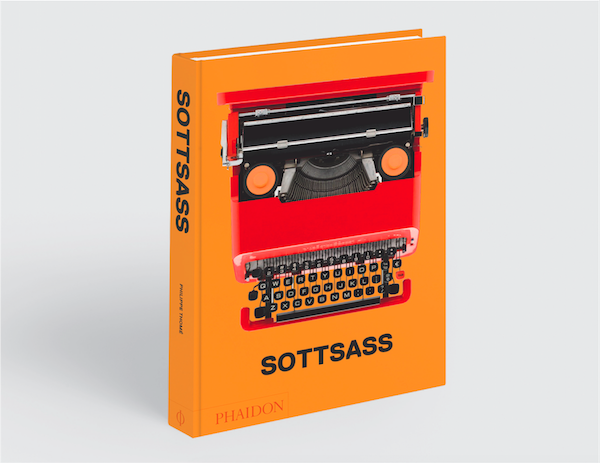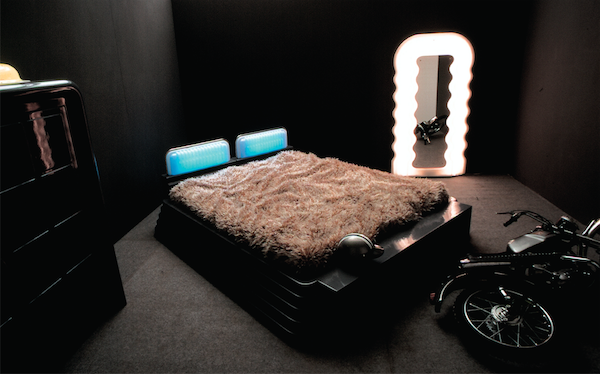 © Ettore Sottsass and Barbara Radice, courtesy Archivio Ettore Sottsass
© Ettore Sottsass and Barbara Radice, courtesy Archivio Ettore Sottsass
Design
An Encyclopedic Look at Sottsass In the Centenary Year of his Birth
2017 has been the year of Ettore Sottsass. The date marks the 100th anniversary of the birth of this seminal figure. Unlike other great Italian designers of the 20th century–the Castiglioni brothers, Vico Magistretti, Enzo Mari, Marco Zanuso–Sottsass ranged far afield, making a significant mark not only as an architect (he always described himself as one) but also as a photographer, sculptor and artist. He eschewed the dictates of modernism completely, inventing his own vocabulary. Some have called him the anti-designer, because throughout his six-decade career he strove to liberate the discipline from the formal strictures of the modern canon. Sottsass was the driving force behind Memphis—the design movement of the 1980’s that thumbed its collective nose at the reigning International Style. While short-lived, its ideas forever changed the design direction of the following decades and still lives with us today.
His birthday has called for global celebrations. New York’s Metropolitan Museum and the Vitra Design Museum in Weil am Rhein in Germany and Milan’s Triennale have staged major retrospectives of his work; the Stedelijk in Amsterdam has one slated for 2018. Galleries have also honored this Austro-Italian maestro. During the 2017 Venice Biennale there were two separate shows—one for his ceramics another for his glass. And, of course, some of his designs have been re-issued, including a wooden bowl he designed for Alessi in 1990, which is offered as a limited edition of 999, and a plastic water kettle he designed for Bodum in 1988. To capitalize on the hoopla, Phaidon press has issued a new edition of Sottsass.

3D Bookshot. Ettore Sottsass, Philippe Thomé, et al, Phaidon
The monumental 500-page doorstop of a book that it originally published four years ago now has a new cover—bright orange instead of pistachio green. And instead of a simple typeface proclaiming its subject—Sottsass—it now sports a vivid picture of perhaps his most famous design, the endearingly quirky red Valentine typewriter. Otherwise the contents seem unchanged.
If you weren’t able to see any of the museum shows, this volume will more than help you appreciate the greatness of the man. Stephen Bayley, the English critic, has called it “a suitable memorial to an exceptional life.”

Elledue bed for Poltronova (Mobili grigi), 1970. © Ettore Sottsass and Barbara Radice, courtesy Archivio Ettore Sottsass (page 198, upper)
The book is organized chronologically beginning with his birth in 1917 to his death, at the age of 90 in 2007. Each period, covering roughly five years, opens with a biography of his life during that time and is followed by illustrations, including drawings and photographs of his sculpture, painting, architecture, furniture, interior design, exhibition design, graphics and publications that he created during that period.
Although he played an indispensible role, Philippe Thomé, the book’s author and a Swiss art historian who wrote his doctoral thesis on Sottsass, gets almost no acknowledgment. His name appears only on the spine of the book, not on the title page and not at the end of the various sections. The book also has introductions written by Francesca Picchi, an architect and teacher at Milan’s Politecnico who focuses on Sottsass as a designer; Deyan Sudjic, director of London’s Design Museum who addresses his career as an architect; Emily King, former design editor of Frieze magazine, who writes on his graphic design and Francesco Zanot, a noted photography critic and curator who discusses Sottsass’s work with a camera. Unfortunately, the book never identifies the writers, so their authority is never made clear.

Wolf House, Colorado, USA, 1986. © Ettore Sottsass and Barbara Radice, courtesy Archivio Ettore Sottsass (page 340, upper)
These defects do nothing to hinder the volume’s enormous scope And its vast array of over 800 illustrations, make for a visual feast. It is indeed encyclopedic.











